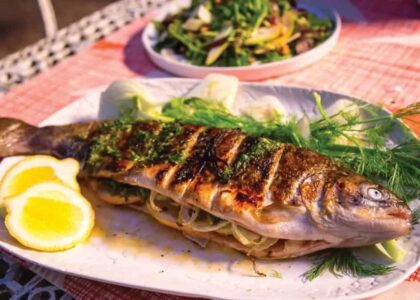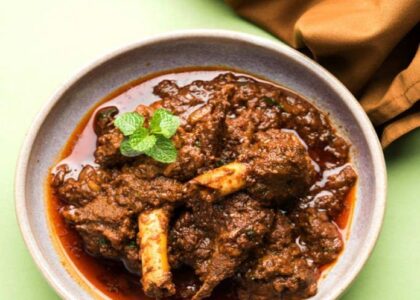India is celebrated worldwide for its cultural diversity, a tapestry woven together by various languages, traditions, and religions. Nowhere is this diversity more evident than in the enchanting region of North-East India, often referred to as the “Seven Sisters.” Nestled in the lap of the Eastern Himalayas, this region is a stunning mosaic of cultures and landscapes that perfectly exemplifies unity in diversity.
A Melting Pot of Cultures:
North-East India is home to a multitude of ethnic groups, each with its own distinct language, traditions, and way of life. From the Bodos of Assam to the Naga tribes of Nagaland, and the Mizo communities in Mizoram, this region showcases a rich tapestry of cultures. These diverse groups coexist harmoniously, creating a unique cultural fusion that is a testament to India’s pluralistic ethos.
Languages:
Linguistic diversity is a hallmark of North-East India. The region is a treasure trove of languages, including Assamese, Bengali, Manipuri, Bodo, Naga languages, and many more. Despite the linguistic diversity, people from various backgrounds interact and communicate with ease, reinforcing the idea that language is not a barrier to unity.
Religious Harmony:
North-East India is a shining example of religious harmony. While Hinduism, Christianity, Buddhism, and indigenous belief systems are practiced by different communities, religious tolerance and coexistence are deeply ingrained. The region’s inhabitants celebrate each other’s festivals and traditions with enthusiasm and respect.
Traditional Attire:
Traditional attire plays a significant role in showcasing the cultural diversity of the North-East. From the vibrant Mekhela Chador worn by Assamese women to the intricate Naga shawls and the tribal attire of the Mizos, each outfit is a reflection of the community’s identity. These attires are not just clothing; they are symbols of pride and heritage.
Culinary Delights:
North-Eastern cuisine is a delightful blend of flavors, and each state offers its unique dishes. Assam’s Bhut Jolokia (the world’s hottest chili pepper), Manipur’s Eromba, Nagaland’s Bamboo Shoot Curry, and Arunachal Pradesh’s Thukpa are just a few examples of the culinary diversity. Sharing meals with locals is a wonderful way to experience the region’s unity in diversity.
Festivals and Celebrations:
The North-East is a land of festivals, with each community celebrating its own unique occasions. Bihu in Assam, Hornbill Festival in Nagaland, Sangai Festival in Manipur, and Chapchar Kut in Mizoram are just a few of the colorful celebrations that bring people together, transcending cultural boundaries.
Natural Beauty:
Beyond its cultural diversity, North-East India’s breathtaking landscapes contribute to its unity in diversity. From the lush tea gardens of Assam to the serene lakes of Meghalaya and the rugged terrains of Arunachal Pradesh, the region’s natural beauty binds its people and visitors alike.
Conclusion:
North-East India is a living testament to the idea that diversity is not a source of division but an incredible asset that strengthens the bonds of unity. The region’s ability to celebrate differences and embrace a shared identity is a valuable lesson for the entire nation. North-East India truly stands as a perfect example of unity in diversity, reminding us of the beauty of our pluralistic society.
-
Rustic, Real, and Regional: Kullu Trout for Every Food Lover
Spread the loveIf you are craving a wholesome, flavorful fish dish that’s both light and satisfying, Kullu Trout is the answer. Hailing from the scenic valleys of Himachal Pradesh, this trout preparation is a tribute to simplicity — where the freshness of the fish is allowed to shine through, enhanced only by subtle spices and…
-
Flavorful Himachali Chha Gosht Recipe You Can Cook Easily at Home
Spread the loveIf you are looking to bring bold, regional Indian flavors to your kitchen, Chha Gosht is a must-try. This Himachali lamb curry is a rustic, aromatic dish made with marinated lamb slow-cooked in a yogurt-based gravy thickened with roasted gram flour (besan). Rich in spices like cardamom, coriander, bay leaf, and ginger, it…
-
Flame-Kissed Perfection: Rajasthani Kalmi Kebab at Home
Spread the loveWhen it comes to Indian starters that leave a lasting impression, Kalmi Kebab stands tall with its smoky aroma, melt-in-your-mouth tenderness, and bold, royal flavors. Originating from the princely kitchens of Rajasthan, this grilled chicken dish has become a favorite across India, especially at festive dinners, barbecues, and celebratory gatherings. The best part?…
-
Authentic Rajasthani Dahi ke Kebab Recipe for Home Cooks
Spread the loveAmong the many gems of Rajasthani fare, one dish that stands out for its elegance and surprising simplicity is the Dahi ke Kebab — soft, creamy yogurt-based kebabs that melt in your mouth. Often served as an appetizer in royal thalis or festive meals, Dahi ke Kebab (Yogurt Kebabs) are a vegetarian’s delight.…
-
Bring Jodhpur to Your Kitchen with This Easy Kachori Recipe
Spread the loveWhen it comes to Indian street food, few snacks can rival the irresistible charm of Pyaaz Ki Kachori — a flaky, golden pastry stuffed with spicy onion filling that bursts with flavor in every bite. This beloved Rajasthani treat, which hails from the vibrant city of Jodhpur, has earned a place in the…
-
Bring Rajasthani Flavors to Your Kitchen with Homemade Thepla
Spread the loveIf you are looking for a wholesome, flavorful, and satisfying flatbread that’s as healthy as it is delicious, Methi Thepla should be at the top of your list. A beloved breakfast and snack in both Rajasthani and Gujarati households, Methi Thepla is a spiced flatbread made with fresh fenugreek leaves (methi) and a…









